Koshchey ‘The Immortal’: Strong And Wise Ruler Of Darkness In Slavic Mythology
A. Sutherland - AncientPages.com - In Slavic folklore, this nature spirit is known as' Koshchey the Deathless' or 'Koshchey, the Immortal.' Still, it has many other very similar names (Kashey, Koschei, Kostiy, Kościej), varying from Slavic culture to another.
Koshchey the Deathless by Ivan Bilibin, 1901. Public Domain
In Slavic folklore, this nature spirit is known as' Koshchey the Deathless' or 'Koshchey, the Immortal.' Still, it has many other very similar names (Kashey, Koschei, Kostiy, Kościej), varying from Slavic culture to another.
He is always portrayed as an elder hunched over, with a long beard and gray hair. At the same time, he is physically and spiritually vital for his weak-looking appearance.
Koshchey is the ruler of darkness. He commands the forces of darkness and masters this art to absolute perfection, allowing him to control the souls and bodies of the dead.
Some regard him as the dragon, and others suggest he is a man because there is no detailed description of his character.
In ancient Russian beliefs, Koshchey is an evil sorcerer with a terrifying appearance, often described as sitting naked on a magic horse galloping through the wildness.
Koshchey can change his voice to charm and induce sleep when necessary. He is also a shape-shifter and can take the form of a whirlwind or a storm wind.
He is a nature spirit representing the destructive powers of nature.
This powerful prince of darkness can fly and suddenly appear from nowhere, accompanied by dark clouds, thunder, and lightning, or he can come under cover of a mist or fog and fly through the air. During the battle, he has been known to lick the venomous parts of his body and bite his challenger, thus causing intense pain and immobility.
Fond of stealing beautiful women, often the brides of the heroes, Koshchey, the prince of darkness and powerful sorcerer, made many enemies among the warriors. He is an elusive master; he can be a smooth talker who can turn on a charming voice and get easy female company. It is pretty challenging to kill Koschey.
"You cannot kill me," Koschei often sneers. "My heart does not lie in my body." He is known as 'deathless' or 'immortal.'
Indeed, it is believed that his life force, or, as he calls it, his "death," is outside his body, hidden in an unknown and inaccessible place.
Sometimes his "death" may be hidden in the point of a needle inside the duck's egg. Although he seems invincible, Kotschey may die if the hero discovers where the egg containing his life force is hidden.
Anyone possessing this magical egg has Koshchey's life in his power; the evil spirit begins to weaken, becomes sick, and finally loses all his magic powers.
In myths and legends, Koshchey - more snake-like than human - is ugly, tall, with long, spindly legs, boney, and fearful to look upon and into his reptilian, never blinking eyes.
Koshchey can see objects distinctly at a great distance, even with his eyes closed. His mouth may change according to mood and he has several large crooked teeth and a nose shaped like a raven's beak.
Koshchey lives in inaccessible and often uninhabited places.
Written by A. Sutherland Ancient Pages.com Staff Writer
Updated on March 22, 2023
Copyright © AncientPages.com This material may not be published, broadcast, rewritten or redistributed in whole or part without the express written permission of AncientPages.com
Expand for referencesPilkington - Fairy Tales of the Russians and Other Slavs: Sixty-Eight Stories
Dmitriy Kushnir - Creatures of Slavic Myth
More From Ancient Pages
-
 Salzburg Catacombs: Early Christian Place For Secret Gatherings And Hiding From Persecution
Featured Stories | Mar 16, 2016
Salzburg Catacombs: Early Christian Place For Secret Gatherings And Hiding From Persecution
Featured Stories | Mar 16, 2016 -
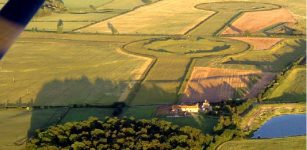 Future Of Thornborough Henges Secured – Stonehenge Of The North Preserved For The Nation
News | Feb 3, 2023
Future Of Thornborough Henges Secured – Stonehenge Of The North Preserved For The Nation
News | Feb 3, 2023 -
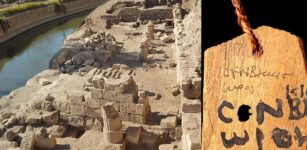 Ancient Egyptian Temple, 30 Mummy Cards, 85 Tombs And Surveillance Points From The Era Of Ptolemy IIIs Discovered In Sohag
Archaeology | May 5, 2022
Ancient Egyptian Temple, 30 Mummy Cards, 85 Tombs And Surveillance Points From The Era Of Ptolemy IIIs Discovered In Sohag
Archaeology | May 5, 2022 -
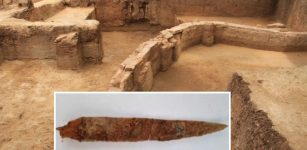 Rare Well-Preserved 2,500-Year-Old Dagger Linked To The Keeladi Civilization Discovered In Tamil Nadu, India
Archaeology | Aug 13, 2021
Rare Well-Preserved 2,500-Year-Old Dagger Linked To The Keeladi Civilization Discovered In Tamil Nadu, India
Archaeology | Aug 13, 2021 -
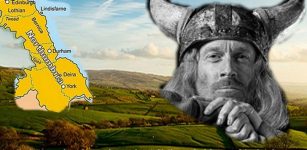 Famous Viking Warrior Eric “Bloodaxe” Haraldsson: King Of Norway
Featured Stories | Sep 29, 2016
Famous Viking Warrior Eric “Bloodaxe” Haraldsson: King Of Norway
Featured Stories | Sep 29, 2016 -
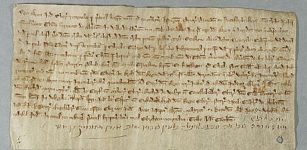 York’s Thriving Medieval Jewish Community – New Study
Archaeology | Aug 22, 2023
York’s Thriving Medieval Jewish Community – New Study
Archaeology | Aug 22, 2023 -
 Ancient Town’s Destruction Dated With Help Of Chicken Bones And Snail Shells
Archaeology | Aug 17, 2022
Ancient Town’s Destruction Dated With Help Of Chicken Bones And Snail Shells
Archaeology | Aug 17, 2022 -
 Old Bone Links Lost American Parrot To Ancient Indigenous Bird Trade
Archaeology | Nov 8, 2022
Old Bone Links Lost American Parrot To Ancient Indigenous Bird Trade
Archaeology | Nov 8, 2022 -
 Last Homo Erectus Lived 117,000 Years Ago At Ngandong
Archaeology | Dec 19, 2019
Last Homo Erectus Lived 117,000 Years Ago At Ngandong
Archaeology | Dec 19, 2019 -
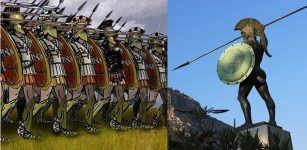 Sparta And Legendary King Leonidas: The Heroes Of Thermopylae
Featured Stories | Jul 18, 2018
Sparta And Legendary King Leonidas: The Heroes Of Thermopylae
Featured Stories | Jul 18, 2018 -
 Enigmatic, Grand Neolithic Dolmen Roche-aux-Fées Built By Fairies And Steeped In Aura Of Love And Hope
Featured Stories | Jan 9, 2025
Enigmatic, Grand Neolithic Dolmen Roche-aux-Fées Built By Fairies And Steeped In Aura Of Love And Hope
Featured Stories | Jan 9, 2025 -
 King Solomon Was Invented As Political Propaganda To Unite People Of Judah – Scholars Argue
Biblical Mysteries | Feb 3, 2020
King Solomon Was Invented As Political Propaganda To Unite People Of Judah – Scholars Argue
Biblical Mysteries | Feb 3, 2020 -
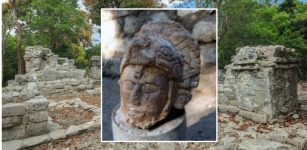 Sculpted Head Of Ancient Warrior Wearing A Serpent Helmet Found At Chichen Itza
Archaeology | Nov 13, 2023
Sculpted Head Of Ancient Warrior Wearing A Serpent Helmet Found At Chichen Itza
Archaeology | Nov 13, 2023 -
 Evolution Might Stop Humans From Solving Climate Change – Researchers Say
Evolution | Jan 3, 2024
Evolution Might Stop Humans From Solving Climate Change – Researchers Say
Evolution | Jan 3, 2024 -
 More Than 10,000 Pre-Columbian Earthworks Remain Hidden Throughout Amazonian Forests
Archaeology | Oct 5, 2023
More Than 10,000 Pre-Columbian Earthworks Remain Hidden Throughout Amazonian Forests
Archaeology | Oct 5, 2023 -
 Yule Goat Is A Scandinavian Christmas Tradition Based On Norse Legends And Worship Of God Thor
Christmas Traditions | Dec 2, 2024
Yule Goat Is A Scandinavian Christmas Tradition Based On Norse Legends And Worship Of God Thor
Christmas Traditions | Dec 2, 2024 -
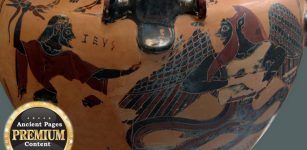 Mysterious Shape-Shifting Beings In Ancient Greece
Ancient Mysteries | Nov 12, 2014
Mysterious Shape-Shifting Beings In Ancient Greece
Ancient Mysteries | Nov 12, 2014 -
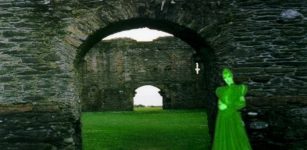 Enigmatic Green Lady In British Folklore
Featured Stories | Jan 9, 2017
Enigmatic Green Lady In British Folklore
Featured Stories | Jan 9, 2017 -
 Ancient Underground Tombs And Lightening God In Peru – Complex Concepts Of Death And Renewal Revealed
Archaeology | May 22, 2018
Ancient Underground Tombs And Lightening God In Peru – Complex Concepts Of Death And Renewal Revealed
Archaeology | May 22, 2018 -
 Engraved Trees Are Living Records Capturing The Rich History And Traditions Of The Sámi People
Archaeology | Nov 21, 2024
Engraved Trees Are Living Records Capturing The Rich History And Traditions Of The Sámi People
Archaeology | Nov 21, 2024

